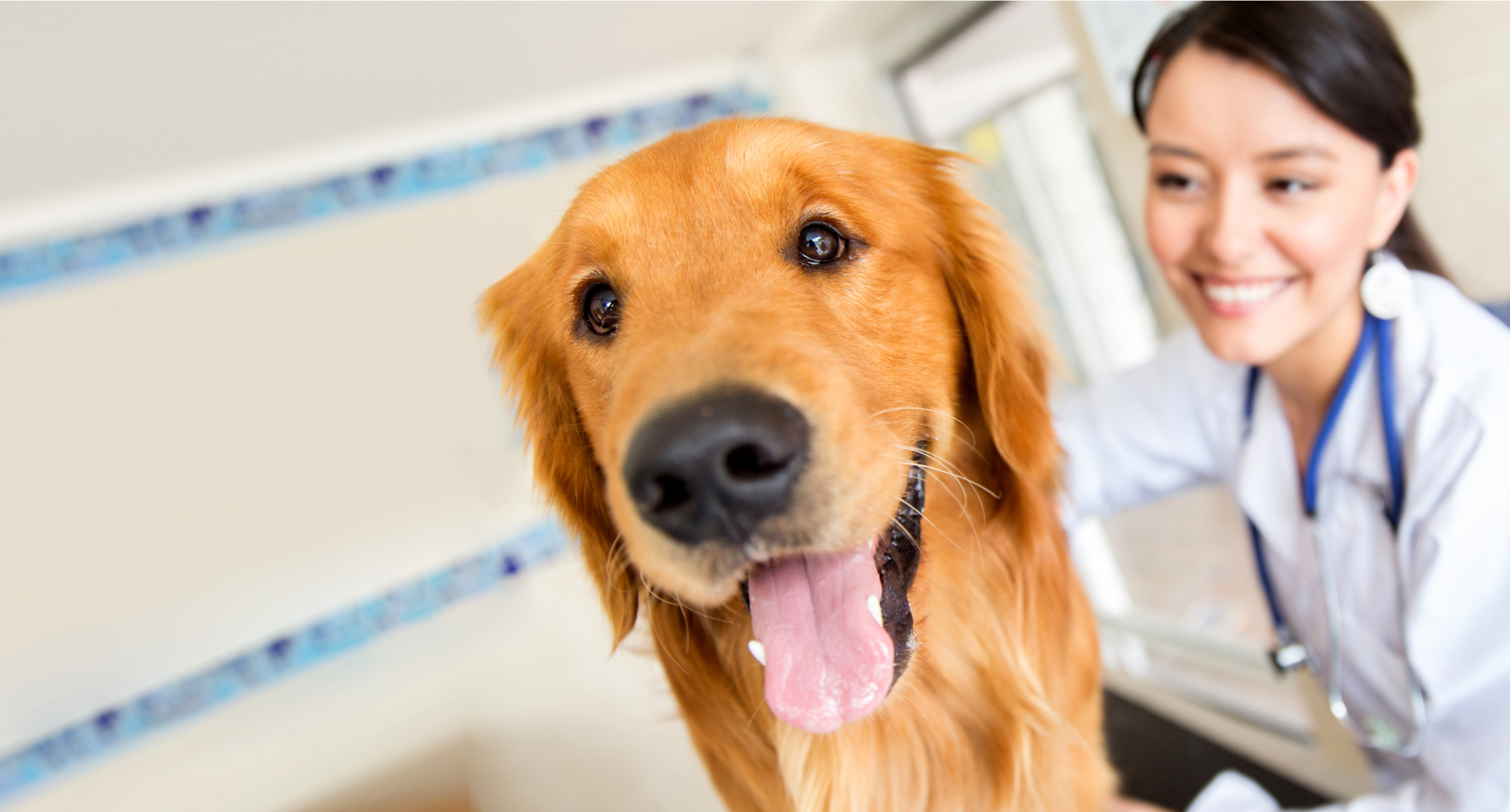Every time your pet is unwell, there is heartache associated. While some illnesses and injuries are unavoidable, there are others that may be preventable with a bit of planning and knowledge of what to watch out for.
Our vets have analysed PetSure claims data to identify some common problems that could be avoided or reduced, leading to happier and healthier pets, vets and pet parents!
Every time your pet is unwell, there is heartache associated. While some illnesses and injuries are unavoidable, there are others that may be preventable with a bit of planning and knowledge of what to watch out for.
Our vets have analysed PetSure claims data to identify some common problems that could be avoided or reduced, leading to happier and healthier pets, vets and pet parents!
Hear, hear – check those ears
Shaking the head, scratching the ears and smelly ears are some of the signs that your pup could be suffering from an ear problem. Irritated ears can quickly become infected, and complications can arise including narrowing of the ear canals and ruptured ear drums, not to mention a lot of pain and discomfort for your best friend.
Ear problems were featured in the top five most common conditions in dogs in 2022.
While ear problems are less common in cats, they do occur. Sometimes ear problems are associated with underlying allergies, foreign bodies, polyps or even structural issues with the ears.
Weekly checks of your pet’s ears can help prevent big problems later. Look for signs of redness, discharge, moisture, or bad smells. Clean your dog’s ears with dog ear cleaner every fortnight and every time your dog has been for a bath or a swim. You may need to clean the ears more frequently if your dog has existing ear problems already, or if your vet has recommended it.
Table: Top 5 dog breeds with ear infections in 2022^^
| 1 | Poodle – Standard |
| 2 | English Springer Spaniel |
| 3 | Cocker Spaniel |
| 4 | Labradoodle |
| 5 | Golden Doodle (Groodle) |
Teeth: you only look after the ones you want to keep
A common issue affecting our dogs and cats is dental disease (periodontal disease). It involves the build-up of plaque on the teeth, which fosters the ideal conditions for bacterial growth below the gum line. This leads to gum infection and inflammation, which can cause pain for the animal and increase their risk of other diseases of the heart, liver and kidneys that are particularly sensitive to spreading oral bacteria.
If untreated, dental disease in pets can result in foul smell, tooth loss, gum bleeding and difficulty chewing. Luckily, dental illness can be avoided with at-home care and regular veterinary check-ups. The best way to avoid dental disease is by brushing your pet’s teeth.
As pets get older, the costs of dental treatments increase due to worsening dental health.
Table: Dental illness treatment by age. Age Cats Dogs
| 0 | $432 | $264 |
| 1 | $680 | $463 |
| 2 | $680 | $553 |
| 3 | $833 | $611 |
| 4 | $833 | $674 |
| 5+ | $833 | $778 |
| Total | $771 | $652 |
By incorporating dental care into your pet’s usual routine, you can help reduce dental illness, pain and infection in your pet, and potentially reduce the cost of dental treatment over your pet’s lifetime.
To understand if pet insurance provides benefits towards dental illness, please refer to the Product Disclosure Statement including any applicable policy terms and conditions.
Preserve all nine lives – accidents in cats
Did you know that in 2022, accidental injuries were in the top five reasons cats went to the vet?5
These accidents include bite injuries, cat bite abscesses, wounds and fractures caused by things like road accidents and snake bites.
Many of these incidents occur in free-roaming cats, so they could be avoided by keeping our feline friends indoors or in secure cat enclosures. This way they can still enjoy the great outdoors and a spot of bird-watching without encountering hazards like other cats, dogs, cars and snakes!
If you don’t hide it, they’ll find it – household toxins
There are many household items that can be dangerous to your pets. The key is to keep them out of paw’s reach. Regular checks around the home can mean the difference between a happy pet or a trip to the emergency room.
In 2022, PetSure received 3,501 claims of toxicity in dogs, with an average claimed amount of $741. The highest claimed amount for toxicity was $16,246!
Common toxins and tips to avoid them.
Cats may be more sensible when it comes to eating things they shouldn’t, with 79 claims for ingested toxins received for cats, with an average claim amount of $555 and the highest claimed amount of $3,599.
Cleaning products Keep them safely stored away where dogs cannot access the bottles. Dogs have been known to chew up the bottles, so keep them in a cupboard or locked away. When in use, keep pets away from cleaning products to avoid inhalation, ingestion or unwanted contact. Ensure residue of cleaning products cannot come into contact with pets.
Plants Keep indoor plants out of reach of pets, unless you are certain they are safe if consumed. If ingested, Lillies, for example, can be deadly to cats and aloe vera can cause vomiting and tremors in dogs.
Insect/rat baits and poisons Hire professionals for pest control needs and ensure they know what type of pets you have. Avoid the use of baits as even when hidden they can be moved by other animals and consumed by pets.
Human medications Keep all medications, including ointments or creams, safely stowed in a medicine cabinet or other cupboard well out of your pet’s reach. Never give any human medications to your pets without first consulting your vet.
He’s not fat, he’s fluffy…or is he?
While we might have a giggle at those extra rolls or succumb to those big puppy dog eyes looking longingly at us for a snack, obesity in pets is no laughing matter. Being overweight can predispose our beloved pets to a variety of serious diseases including arthritis, cruciate disease, intervertebral disk disease, endocrine (hormonal) diseases, diabetes, heart and respiratory diseases, urinary tract diseases, cancers and more.
While ensuring our pets aren’t overweight doesn’t guarantee they won’t get ill, it’s something that you can control at home and can lead to a happier, healthier, and longer life for your pets.
Some key ways to ensure your pet maintains a healthy weight include:
- Follow the feeding guidelines on food packaging rather than free pouring food.
- Avoid giving pets snacks, especially high calorie ones like cheese.
- Remember that bones often contain a lot of fat, and this contributes to daily intake of calories.
- Keep up daily exercise, including walks, at-home play and other stimulating activities.
- Watch out for sudden weight gain which can be caused by hypothyroidism, diabetes, liver disease or other medical issues which requires immediate veterinary attention.
According to PetSure claims data 2022, some conditions with increased risk of occurring in overweight dogs and their costs:
Condition | Average claim cost | Highest claim | cost No. of dogs affected in 2022 |
$423 | $12,255 | 19,384 | |
Cruciate ligament disease | $2,408 | $25,687 | 10,993 |
$3,480 | $31,221 | 2,849 | |
$1,504 | $19,936 | 1,717 | |
Tracheal collapse | $643 | $15,202 | 312 |
Hypothyroidism | $388 | $4,747 | 1,799 |
Table: Some conditions with increased risk of occurring in overweight cats and their costs:
| Condition | Average claim cost | Highest claim | No. of cases in 2022 |
| Diabetes mellitus | $1,208 | $41,947 | 322 |
| Heart disorder | $1,060 | $6,764 | 119 |
| Urinary bladder stone | $1,796 | $14,634 | 97 |
Those that crawl, wriggle, and jump – parasites and pets
We get it, life is busy, and you may have missed that dose of flea, tick or heartworm prevention. Check that your pet is up to date with parasite preventatives.
Check with your vet if you’re not sure what preventative control your four legged friend should be on. After all, as they say, “prevention is better than cure”.
Have you heard of Hookworm? These nasty worms can be particularly devastating to puppies, but adult dogs can carry them and pass them along, so worming dogs of all ages is important. In 2022, hookworm had an average claimed amount of $572 and a maximum claimed amount of $4,071.
Ticks
In 2022, PetSure saw 664 cases of tick paralysis in dogs, with an average claim cost of $2,402 and a maximum claim cost of $53,331.Cats were also affected by tick paralysis, with 119 claimed cases and an average claim cost of $1,859. The maximum claim cost in cats was $20,348.
Tick infestation was also a problem in Aussie pets in 2022. PetSure saw 251 dogs and 25 cats treated for tick infestation, with a maximum cost of $5,606.
Rare but deadly, Ehrlichiosis (a tick-borne disease) was claimed for just 17 times in 2022 but with an average claim cost of $2,153 and a maximum claim cost of $11,028. Ensuring that tick preventatives are up to date is a far better option than a sick pet!
Itchy ears in puppies and kittens are frequently caused by ear mites Otodectes Cynotis. In pups, the average claimed amount to treat these pests was $185 with a maximum claimed amount of $726. In kittens, $147 was the average claimed amount and the maximum was $296.
The good news is that many topical flea products also treat ear mites, so chat to your vet about the best option for your pet.
A friendly reminder about vaccinations
We can’t talk about preventable diseases without discussing vaccinations. For your dogs, the core diseases that vaccines target are canine parvovirus, canine distemper, canine infectious hepatitis, canine parainfluenza and canine (kennel) cough. In at-risk areas, the vet may also recommend a leptospirosis vaccination to protect against the potentially deadly infectious disease which can be carried by rodents.
For our feline friends, core vaccines target feline herpesvirus, calicivirus (often referred to together as “cat flu”), feline parvovirus, feline immunodeficiency virus and feline leukaemia virus, which is second to only trauma as the leading cause of death in cats, killing 85% of persistently infected cats within three years of diagnosis.
Pet insurance can help by covering a portion of the eligible vet bill if the unexpected happens. Because it is difficult to predict the costs of veterinary care, it can help to have measures in place to help prepare for the unexpected. Check out our partner network and explore our policy tools to find a pet insurance policy.
Not all conditions or items are covered by Pet Insurance. Refer to the applicable Product Disclosure Statement for information about coverage and exclusions.



 Fact checked
Fact checked



